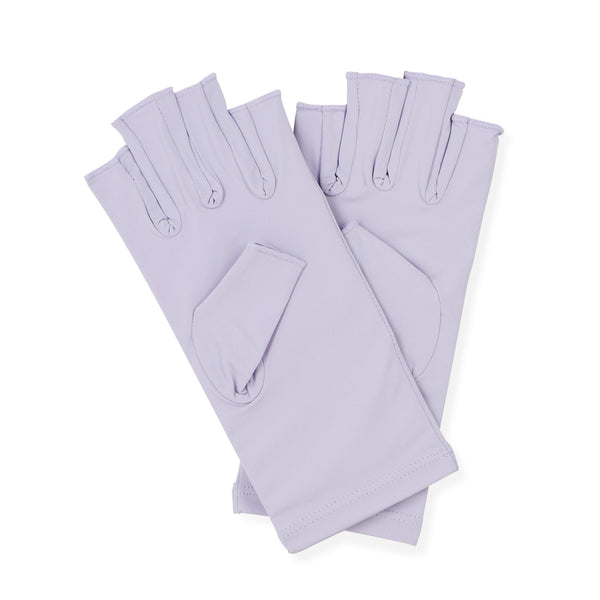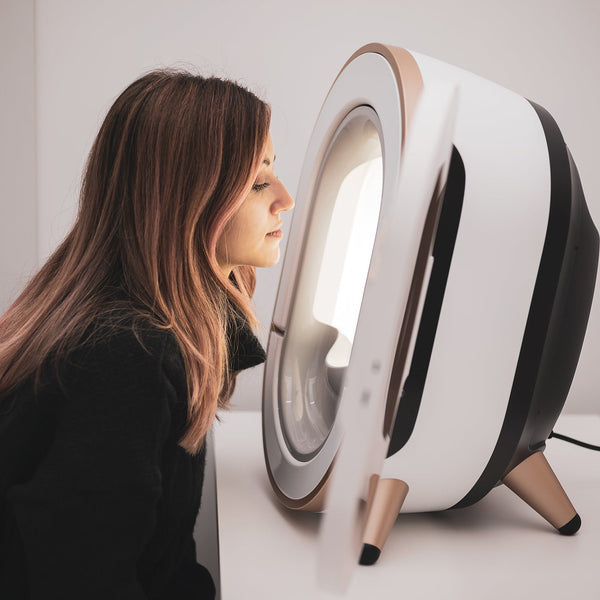Designing Your Perfect Spa Space - Modern, Classical and More Styles to Love

In recent years, the word “spa” has become synonymous with self-care and relaxation, encompassing all types of businesses – from nail salons to facial bars. In fact, spas as we know them, have been around for at least 2000 years – it is believed that the word originates from its namesake town of Spa, Belgium, known as Aquae Spadanae in Roman times. The town’s medicinal thermal springs were famous around the world and peaked in popularity in the 18th century. In fact, water from Spa, Belgium still continues to be bottled and sold after 400 years. It is also believed that SPA is an acronym for Sanitas Per Aquam, or Health Through Water in Latin, but that version isn’t widely accepted, and I give credit to Spa, Belgium as the originator.
I should mention that I love all things spa, including spa and wellness tourism. In my 20 plus years in the esthetic industry, I have seen some of the world’s most exquisite and luxurious spas and had the pleasure of training some of the most educated spa therapists. I remember staying a week in Karlovy Vary in 2006 - a picturesque Czech spa town famous for its mineral springs and sanatoriums. I must admit, although the thermal waters and treatments were remarkable, the same cannot be said of the spa facilities- they looked sterile, lackluster, and generic. They were the perfectly preserved artifact from the 80s and 90s - an era of spa mediocracy.
Today, as our industry grows and flourishes, many new types of spa concepts emerge, some faster than we can keep track of. Generally grouping the spas into a few key categories, we can see the seven main categories:
Day Spa
The first day spa concept was introduced by Elizabeth Arden in 1910, known as Manhattan's Red Door Salon. What is a day spa? Day spas don’t offer overnight accommodations, and usually have massages, facials, waxing, body wraps and nail care on their menus. Many day spas offer hot and cold pools, dry and steam saunas, a salt room, and other wellness facilities that guests can partake in.
Destination Spa
In contrast with the day spa, a destination spa provides overnight accommodations, so the guests can enjoy a holistic wellness program for several days. In fact, some destination spas require a two night or longer stay to ensure guests reap the most benefits from the program. In addition to bodywork and facials, guests take part in meditation, sound baths, yoga, healing bath rituals, and are offered a healthy meal program for the entirety of their stay. The pioneers of the Destination spa concept are Deborah and Edmond Szekely, who opened the first destination spa in 1940 - Rancho la Puerta. Later, in 1958, Deborah Szekely opened the Golden Door – still the #1 destination spa in the world.
Hotel Spa
Wherein a destination spa is the main attraction, and the accommodations are an added amenity provided for spa guests, hotel spas are spas on the premises of hotels. Unlike a destination spa, there are generally fewer facilities and activities. Spas in well-known hotel chains tend to follow a rigid corporate structure and protocols, and a similar overall design.
Club Spa
The club spa is a similar concept to a hotel spa, but the facility is usually attached to a gym. Club spas can also be attached to an airport lounge, a gym within a corporate headquarters, or a golf club.
Medical Spa
A medical spa is a hybrid of a medical facility and a day spa that provides nonsurgical aesthetic treatments such as neurotoxin injections, fillers, peels, laser resurfacing, photo-rejuvenation, body contouring and laser hair removal. A med spa operates under the supervision of a highly trained and specialized physician. While not every procedure is done by a doctor, they are performed under the supervision of the doctor, most often a dermatologist or plastic surgeon.
Mobile Spa
A mobile spa is exactly that – a spa that comes to you. This can be a physical spa located in an Airstream camper, or a group of therapists that come to the house with all their supplies and tools on hand. Mobile spas are the perfect solution to bridal parties, birthday parties and other occasions where groups of friends want to receive treatments at once.
Thermal Spa
Thermal spas are one of my favorites as far as wellness tourism goes. My first job was at a mineral water hot spring spa at the age of 14, and it was what sparked my passion for this industry. Thermal spas are located all around the globe, and their main draw are the healing waters. Mineral waters relieve joint and muscle pains, and alleviate symptoms of skin conditions such as psoriasis, acne, and eczema.
Spa Design
The overall design is usually dictated by the functionality, size, and style of the space. Although some spa owners take on the job themselves, many work with an architect and an interior designer to achieve their perfect vision. I have been privileged enough to visit some incredible destination and hotel spas where architects were flown in from overseas, and every small detail was given close attention.
It's important to select a designer with experience in the style you are envisioning and is within budget and can work around your timeframe. The designer will need to be able to bring the spa project to life considering space – ceiling height, the presence and absence of walls, windows, storage. Space also refers to the distance between and around objects and their proportions within a room. Positive space refers to objects such as massage tables, sinks, display cases, and other pieces of spa furniture. Negative space is the area of the layout that is left empty, not only around the objects you place in the layout but also between and inside them. Developing the right balance within a room relies on using both positive and negative space just right. A good rule of thumb is to arrange any objects and furnishings at least 3 feet away from walls, doorways and other furniture, and allow at least 30 inches between furniture to provide a path to walk through.
The next important element of design are lines - they can be horizontal, vertical, or dynamic. Horizontal lines can make the room seem wider, vertical lines may accentuate a centerpiece like a tall product showcase or a chandelier. Dynamic lines can be eye-catching, for example zyg-zags and circles, arches, and soft corners.
Light is incredibly important in interior design – in the spa setting, there usually is limited natural light, so we must rely on artificial illumination and mirrors to help brighten the spaces. Light fixtures not only brighten the space but can serve as an additional design element in the room. We recently installed a neon sign at the office that brings an incredible amount of energy and serves as the centerpiece of the entire space. For the spa, warm, dimmed yellow light is best to help relax and unwind. I like to steer clear of any bright white lights even in the reception area, since it can be too harsh on the eyes after a relaxing treatment.
Colors, as a design element can transport you to a peaceful place or send a signal of distress. Some relaxing colors to consider for your spa décor are blue, white, beige, light pink and green. Red, on the other hand can be too stimulating, and may not be a great fit.
And finally, the last important elements of design are textures and patterns. Textures have the ability to relax – soft linens, luxurious rugs, the texture of the floor tiles, and its pattern. This is what creates the ambiance of a relaxing spa day.
Modern
Not to be confused with contemporary, modern style refers to a particular aesthetic movement that took place during the early to mid-twentieth century. There are several directions one can go when designing a modern spa space, but the most obvious are Bauhaus and mid-century modern styles. Bauhaus designs are defined by a lack of ornament, the use of clean lines, smooth surfaces, and geometric shapes. This style originated in the 1920s and was further popularized well into the 1930s. It was one of the points of inspiration for mid-century modern style, which is currently having a great resurgence
To me, this concept works best with a mobile spa on wheels in an Airstream, a Med Spa or a hotel spa. Clean lines, simple color schemes, curated functional furniture pieces, holistic design, and basic industrial materials like steel, concrete and glass.
Scandinavian
Another type of popular modern design style is the Scandinavian style, which originated in Northern European countries such as Sweden, Norway, Iceland and Finland. The Scandinavian style entails a clean bright space, usually utilizing white as the wall color with lots of natural light, pale wood furnishings and accent pieces, plants, and soft fabrics.
From the Scandinavian countries also came the Danish design concept of hygge - a word meaning “coziness that makes a person feel content and comfortable”, and Swedish mys – “an ultra-cozy atmosphere”. These design styles add cozy candles, sweet aromas, warm fuzzy fabrics to the Scandinavian style we all know well. This style is perfect for a destination spa, especially for locations that get ample snow throughout the year. There is nothing better than combining warm body wraps, massages, sauna treatments, and hot whirlpool baths with a warm and cozy spa environment.
Classical
If you ask me, a classical spa design is the perfect fit for a thermal spa, paying homage to the Roman and Greek baths of antiquity. Columns, laurel wreaths, statues, crown moldings and ceiling medallions all evoke the feeling of being inside the Roman baths. It is no wonder this style was incredibly popular during the Renaissance and into the 19th century. This style is timeless and is incredibly rich in its grandeur. Some textures that complement the marble floors and symmetrical Roman columns are upholstery and curtains made from striped silks and jacquard with tassels. The furniture pieces can be carved wood, and we must not forget the grand crystal chandelier that is the piece de resistance of every classically designed space.
Contemporary
Lastly, my suggestion for a hotel spa, club spa, and day spa is the contemporary design. By contemporary, I mean the presently popular modern luxury style. The contemporary style is constantly evolving to reflect the presently trending design styles. Currently, minimalism, natural materials and solid patterns are popular design choices for this style. Open concept is the key to creating a contemporary spa space. Ample lighting and large windows make the space seem bigger, all while borrowing some key design elements from mid-century modern and Scandinavian styles. Textures include velvet and boucle, mixed in with brass and gold accents. Contemporary design style is the preferred option for those who have the budget to frequently update their spa space to match the latest trends.
Hopefully this article was a helpful introduction to the world of spa design. There are many more design styles I did not mention, and the possibilities are endless. An experienced interior designer can be your perfect partner and guide in creating an ultimately functional and relaxing space in your spa, or you can attempt to create the vision yourself. In either case, when designed thoughtfully, deliberately, and with love, it is bound to be perfect.









